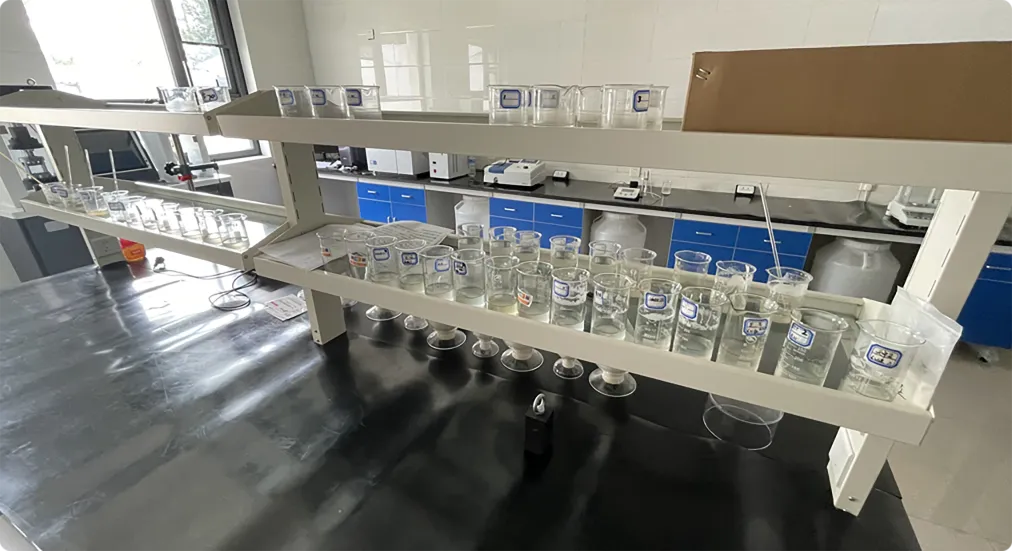
Nov . 09, 2024 09:33 Back to list
Safety Data Sheet for Hydroxypropyl Methyl Cellulose Overview and Application
Understanding Hydroxypropyl Methyl Cellulose (HPMC) and Its Safety Data Sheet (MSDS)
Hydroxypropyl methyl cellulose (HPMC) is a semi-synthetic polymer derived from cellulose, a natural polymer found in plant cell walls. HPMC is widely used in various industries, including pharmaceuticals, food, construction, and personal care products, due to its excellent film-forming properties, thickening capabilities, and ability to enhance the stability of emulsions. This article provides an overview of HPMC and essential insights into its safety data sheet (MSDS).
Chemical Properties and Applications
HPMC is recognized for its versatile properties, including solubility in cold water, which makes it an ideal ingredient in many applications. Its viscosity can be tailored by adjusting the degree of substitution of the hydroxypropyl and methyl groups, allowing manufacturers to create products with specific performance characteristics.
In the pharmaceutical industry, HPMC serves as a binder in tablet formulations and as a coating agent, enhancing the release profiles of active ingredients. In the food industry, it acts as a thickener and stabilizer, improving the texture and shelf life of various products. Additionally, in construction, HPMC is utilized as an additive in cement and plaster to improve workability and water retention.
Safety Considerations and MSDS Overview
While HPMC is generally recognized as safe (GRAS) when used appropriately, it is important to consider safety measures as outlined in its Material Safety Data Sheet (MSDS). The MSDS provides critical information about the substance, including its composition, hazards, handling and storage protocols, and emergency measures.
Composition and Identification
The first section of an MSDS typically includes the chemical identification of HPMC, along with its CAS number (9004-65-3) and synonyms. The document also details its physical and chemical properties, such as appearance, odor, pH, melting point, and solubility, which are essential for understanding its behavior in various environments.
Hazards Identification
The hazard identification section outlines potential health effects associated with HPMC exposure. Although HPMC is not classified as a hazardous substance under standard regulations, excessive inhalation of dust could lead to respiratory irritation. As a precaution, it is advisable to minimize dust generation during handling and to use appropriate personal protective equipment (PPE), such as masks and gloves, especially in industrial settings.
hydroxypropyl methyl cellulose msds

Handling and Storage
Proper handling and storage practices are crucial in maintaining the integrity and safety of HPMC. Users are advised to store HPMC in a cool, dry place away from direct sunlight and incompatible materials. It is also essential to follow specific procedures for preventing spills and leaks, which may involve sweeping up the material and disposing of it according to local regulations.
Exposure Controls and Personal Protection
The MSDS emphasizes the importance of exposure controls and personal protection. In environments where HPMC dust may be generated, adequate ventilation should be ensured. Additionally, the use of PPE, including gloves, goggles, and respiratory protection, should be implemented based on the nature of the exposure and the environment.
First-Aid Measures
In case of exposure, the first-aid measures outlined in the MSDS provide guidance on how to respond to various scenarios. For instance, in cases of inhalation, the affected individual should be moved to fresh air, and if symptoms persist, medical attention should be sought. For skin contact, washing with soap and water is recommended to prevent irritation.
Disposal Considerations
Proper disposal of HPMC is essential for environmental safety. The MSDS provides recommendations for disposal methods, suggesting that HPMC should be treated according to local, regional, and national waste management regulations.
Conclusion
Hydroxypropyl methyl cellulose is a versatile and widely used polymer with numerous applications across different industries. Understanding its properties and the information contained within its MSDS is critical for safe handling and effective utilization. Adhering to safety guidelines not only ensures a safe working environment but also promotes the responsible use of HPMC in various applications, supporting both public health and industry standards. Always ensure to consult the most current MSDS for specific details and updates related to HPMC.
-
Versatile Hpmc Uses in Different Industries
NewsJun.19,2025
-
Redispersible Powder's Role in Enhancing Durability of Construction Products
NewsJun.19,2025
-
Hydroxyethyl Cellulose Applications Driving Green Industrial Processes
NewsJun.19,2025
-
Exploring Different Redispersible Polymer Powder
NewsJun.19,2025
-
Choosing the Right Mortar Bonding Agent
NewsJun.19,2025
-
Applications and Significance of China Hpmc in Modern Industries
NewsJun.19,2025







